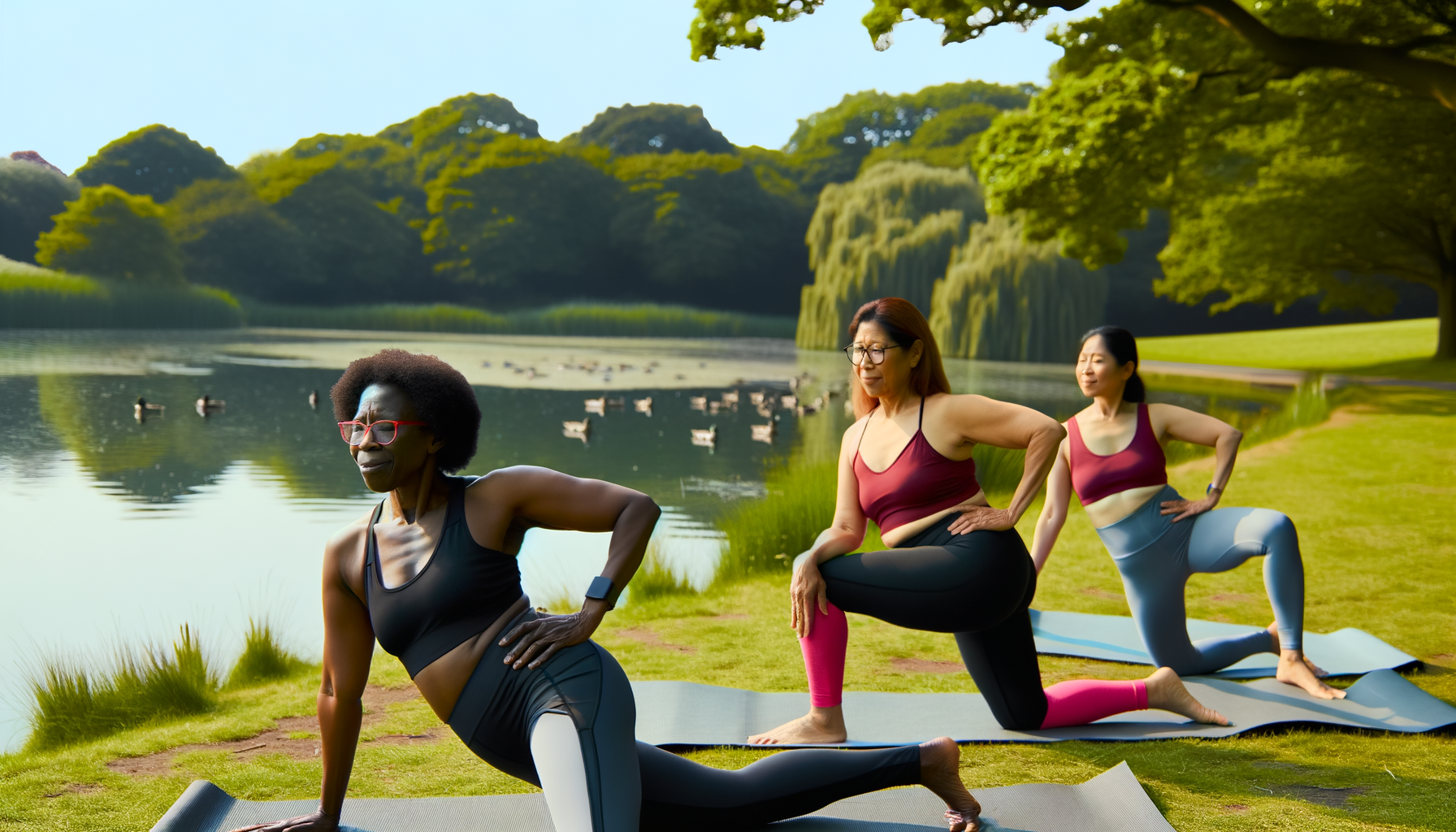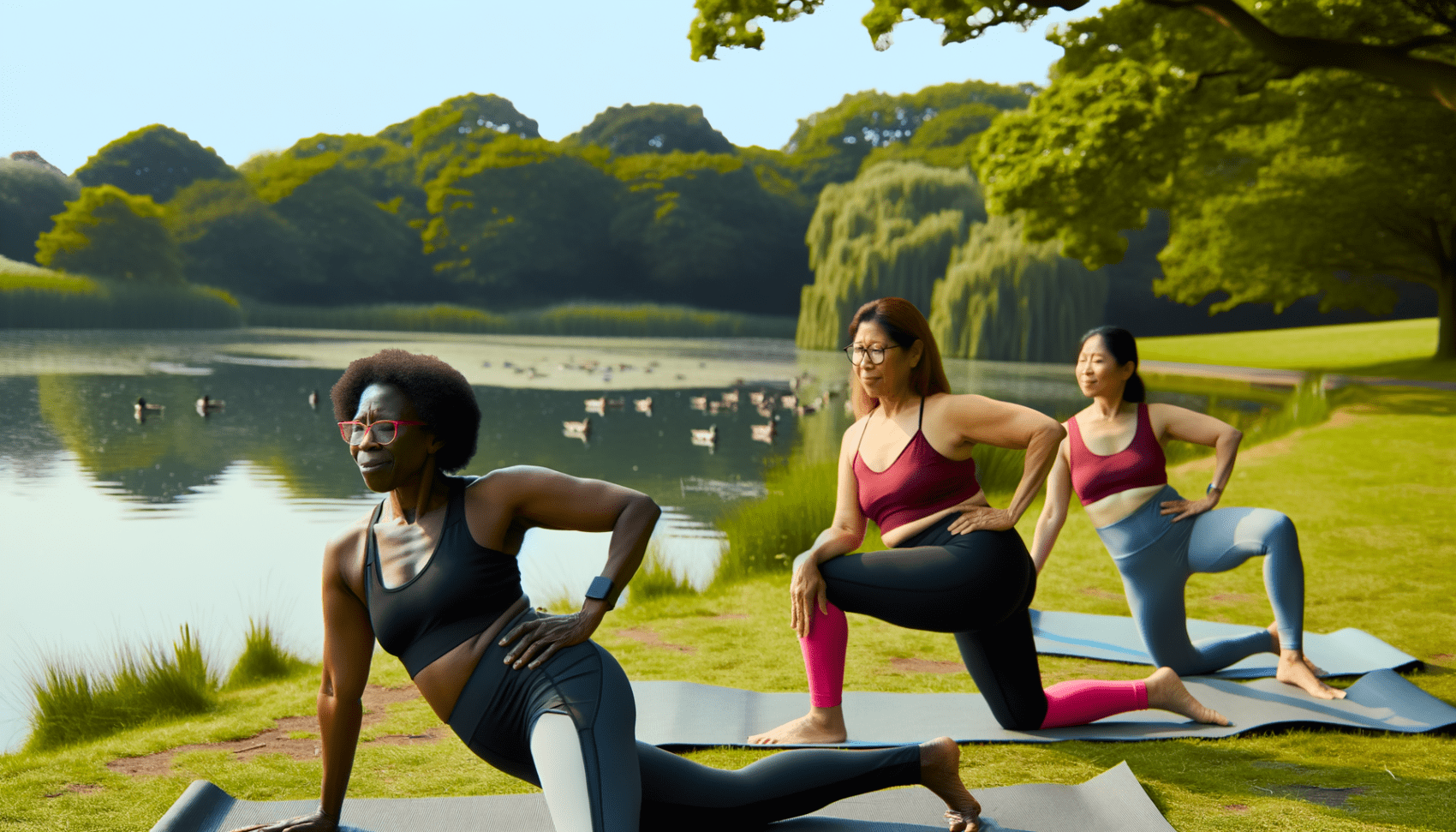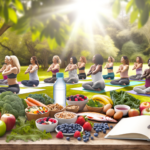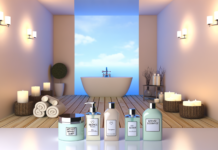The Importance of Staying Active for Women in Their 50s
Entering the fifth decade of life brings a multitude of changes for women, many of which can be mitigated by maintaining an active lifestyle. Regular physical activity is crucial for women in their 50s as it helps combat age-related muscle loss, improves bone and joint health, lowers cardiometabolic risk factors, and supports mental health and cognitive functioning. Most importantly, staying active can preserve functional independence and enhance quality of life. The smallest changes, such as incorporating basic exercises into daily routines or choosing enjoyable activities like dancing or hiking, can lead to significant health improvements.
Challenges and Benefits of Maintaining an Active Lifestyle at This Stage
While the benefits of staying active are clear, women in their 50s may face challenges such as managing chronic conditions, adapting to physical changes, and overcoming psychological barriers like the fear of injury. However, the rewards far outweigh these challenges. Regular exercise can help manage weight, reduce the risk of chronic diseases, and improve emotional well-being. It’s also a powerful stress reliever and can provide a sense of community when done in groups. Moreover, it’s never too late to start; even those who begin exercising in their 50s can experience profound benefits.

Feeling You Have a Right to Safe Beauty & Fem Care?
If so, it may be time for a change. It starts with knowledge. We have a few suggestions in our new guides.
Overview of Strategies to be Covered in the Article
This article will explore a variety of strategies to help women in their 50s stay active and healthy. We will delve into physical health considerations, including how to manage age-related changes and chronic conditions. Exercise and activity guidelines will be provided, highlighting suitable types of exercises and how to set realistic fitness goals. Nutrition and diet will be discussed, emphasizing the role of a balanced diet in supporting an active lifestyle. Mental and emotional well-being will also be addressed, offering tips for stress management and coping with menopausal changes. Finally, we will look at lifestyle and habit formation to create a sustainable routine that incorporates activity into daily life. By the end of this article, readers will be equipped with the knowledge to embrace an active lifestyle that supports their overall well-being.
Physical Health Considerations
Recognizing age-related physical changes
As women enter their 50s, they often experience significant physical changes that can impact their ability to stay active. Hormonal shifts, particularly due to menopause, can lead to changes in weight distribution, decreased metabolism, and alterations in mood and energy levels. It’s crucial for women to acknowledge these changes and adapt their activity routines accordingly. Understanding that these changes are a natural part of aging can help women maintain a positive attitude towards staying active.
Preventive health screenings and check-ups
Regular health screenings and check-ups become increasingly important for women in their 50s. These can include mammograms, bone density tests, and cardiovascular assessments. Early detection of issues such as osteoporosis or heart disease can inform the type of physical activities that are safe and beneficial. Women should consult with healthcare providers to determine the appropriate screenings for their age and health history.
Managing chronic conditions and mobility issues
Chronic conditions such as arthritis, diabetes, or hypertension may become more prevalent in this decade of life. Women may also face mobility issues that can hinder their ability to perform certain exercises. It’s essential to manage these conditions proactively, often through a combination of medication, lifestyle changes, and tailored physical activity. Working with a physical therapist or exercise specialist can help women find activities that accommodate their specific needs.
Importance of bone density and muscle mass maintenance
Maintaining bone density and muscle mass is vital for women in their 50s to prevent falls, fractures, and the loss of independence. Weight-bearing exercises, such as walking or light weightlifting, can help strengthen bones. Resistance training is also key to preserving muscle mass, which naturally declines with age. Incorporating these types of exercises into a regular routine can help women maintain their physical health and mobility.
Exercise and Activity Guidelines
Recommended Types and Frequency of Exercises
For women in their 50s, a balanced exercise regimen is crucial for maintaining health and vitality. The American Heart Association recommends at least 150 minutes of moderate aerobic activity or 75 minutes of vigorous aerobic activity per week, ideally spread across several days. This can be complemented with strength training exercises at least two days a week. It’s important to include a variety of activities that work on different parts of the body, such as the heart, muscles, and joints.
Low-Impact Exercises Suitable for Women in Their 50s
Low-impact exercises are particularly beneficial as they minimize stress on the joints while still providing a good workout. Examples include:
- Walking: A brisk walk can elevate the heart rate without putting too much strain on the body.
- Swimming: This full-body workout is gentle on the joints and can be very relaxing.
- Elliptical Machine: Provides a good cardiovascular workout with minimal joint impact.
- Cycling: Either stationary or outdoor, cycling is excellent for leg strength and endurance.
- Yoga: Enhances flexibility, balance, and strength with a low risk of injury.
Incorporating Strength Training and Flexibility Exercises
Strength training is essential for maintaining muscle mass and bone density, which can decline with age. Incorporate exercises using hand weights, resistance bands, or body weight (like squats and lunges). Aim for at least one set of 8-12 repetitions for each major muscle group, with a rest in between sets. Flexibility exercises such as yoga or Pilates should also be part of the routine to maintain joint health and prevent stiffness. These can be done after aerobic or strength workouts to maximize benefits.
Setting Realistic and Achievable Fitness Goals
Setting goals is a powerful way to stay motivated. Start with small, achievable targets, such as a daily 15-minute walk, and gradually increase the duration and intensity. It’s important to listen to your body and adjust your goals accordingly. If you experience pain or discomfort, take a step back and reassess. Celebrate your successes, no matter how small, and remember that consistency is key to long-term fitness.
Remember, the best exercise program is one that is sustainable and enjoyable. Find activities that you look forward to doing, and consider enlisting a friend or joining a group to keep the commitment fun and social. Always consult with a healthcare provider before starting any new exercise regimen, especially if you have pre-existing health conditions.
Nutrition and Diet
Nutritional Needs for Women in Their 50s
As women enter their 50s, their nutritional needs evolve due to changes in hormone levels, metabolism, and bone density. Key nutrients to focus on include protein for muscle mass maintenance, calcium and vitamin D for bone health, vitamin B12 for proper nerve function and blood cell production, and omega-3 fatty acids for heart and brain health. A balanced diet rich in these nutrients can help mitigate the natural aging process and maintain vitality.
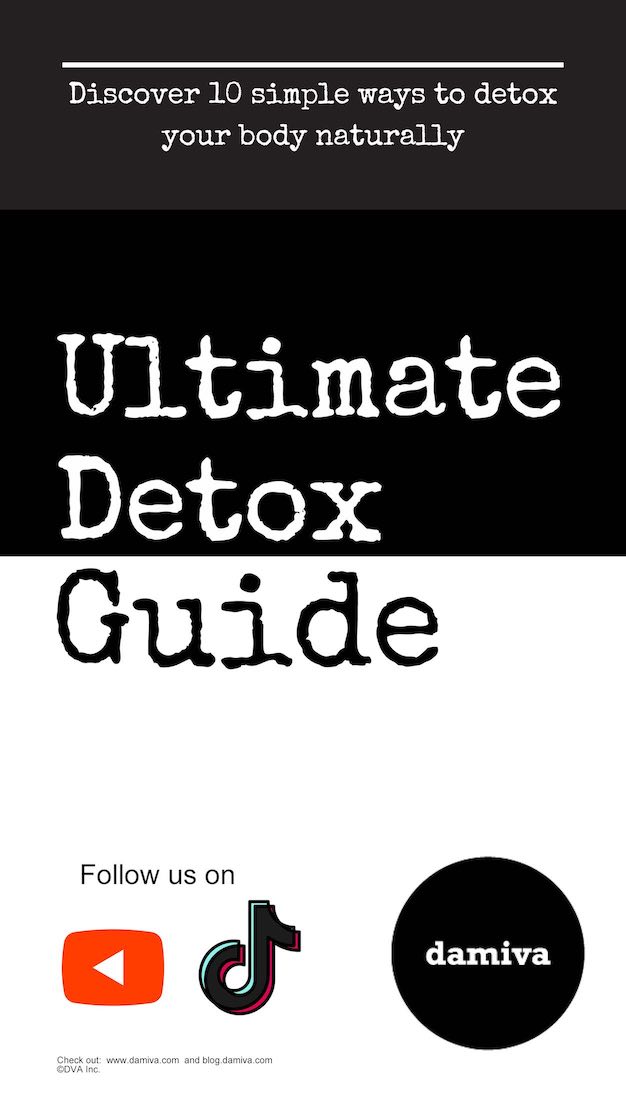
Common chemicals can hurt your gut health, your skin health, your mental health, and immune system.
Do you know the three main ways that your body gets in touch with harmful chemicals?
Knowledge is Power!
The Ultimate Detox Guide will tell you how to lower your exposure to harmful chemicals!
Role of Diet in Supporting an Active Lifestyle
A well-structured diet is crucial for women over 50 to support an active lifestyle. The right balance of macronutrients (carbohydrates, proteins, and fats) and micronutrients (vitamins and minerals) provides the energy needed for physical activity and aids in recovery and muscle repair. Diets such as the Mediterranean, DASH, and MIND have been recognized for their benefits in promoting heart health, brain function, and overall well-being, which are essential for staying active.
Healthy Eating Habits and Meal Planning
Adopting healthy eating habits is essential for women in their 50s. This includes consuming a variety of fruits, vegetables, whole grains, lean proteins, and healthy fats. Meal planning can help ensure a well-rounded diet and prevent reliance on processed foods. Incorporating foods rich in the aforementioned nutrients and following diets like the Mediterranean or DASH can contribute to a sustainable and healthful eating pattern. It’s also important to adapt the diet to personal preferences and nutritional needs, ensuring it’s enjoyable and easy to maintain long-term.
By the way, something for you, a little gift!!!
I am just in the middle of publishing my book. It’s about How women can balance their hormones. One part is about food and diet, of course.
Follow this link and enter your email.
I will send you this part of the book for free once the book is published. It has many concrete, practical tips and recipes and will help you feel better during menopause or times of Big hormonal fluctuations.
Annette, Damiva Lead for Health & Wellness

Hydration and Its Importance in Physical Activity
Hydration plays a pivotal role in maintaining an active lifestyle, especially for women in their 50s. Water is essential for joint lubrication, temperature regulation, and transporting nutrients to cells. Adequate fluid intake before, during, and after physical activity is vital to optimize performance and recovery. Women should aim to drink fluids regularly throughout the day, with an emphasis on water as the primary beverage of choice, while being mindful of the signs of dehydration.
Mental and Emotional Well-being
Mental health benefits of staying active
For women in their 50s, maintaining an active lifestyle is not only beneficial for physical health but also for mental and emotional well-being. Regular physical activity can significantly improve mood, reduce the risk of depression, and enhance overall cognitive function. Engaging in exercise releases endorphins, often referred to as “feel-good” hormones, which act as natural stress relievers and mood lifters. Moreover, staying active can improve sleep quality, which is closely linked to mental health. As women navigate the changes that come with this decade, including menopause, maintaining an active lifestyle can provide a sense of control and accomplishment, boosting self-esteem and confidence.
Stress management and relaxation techniques
Effective stress management is crucial for women in their 50s. Techniques such as deep breathing exercises, meditation, and yoga can be powerful tools for relaxation and stress reduction. Mindfulness practices encourage living in the present moment, which can alleviate worries about the past or future. Additionally, engaging in hobbies or activities that bring joy can serve as a form of stress relief. It’s important for women to identify personal stress triggers and develop a toolkit of relaxation techniques that work for them, ensuring they can navigate stressors with resilience.
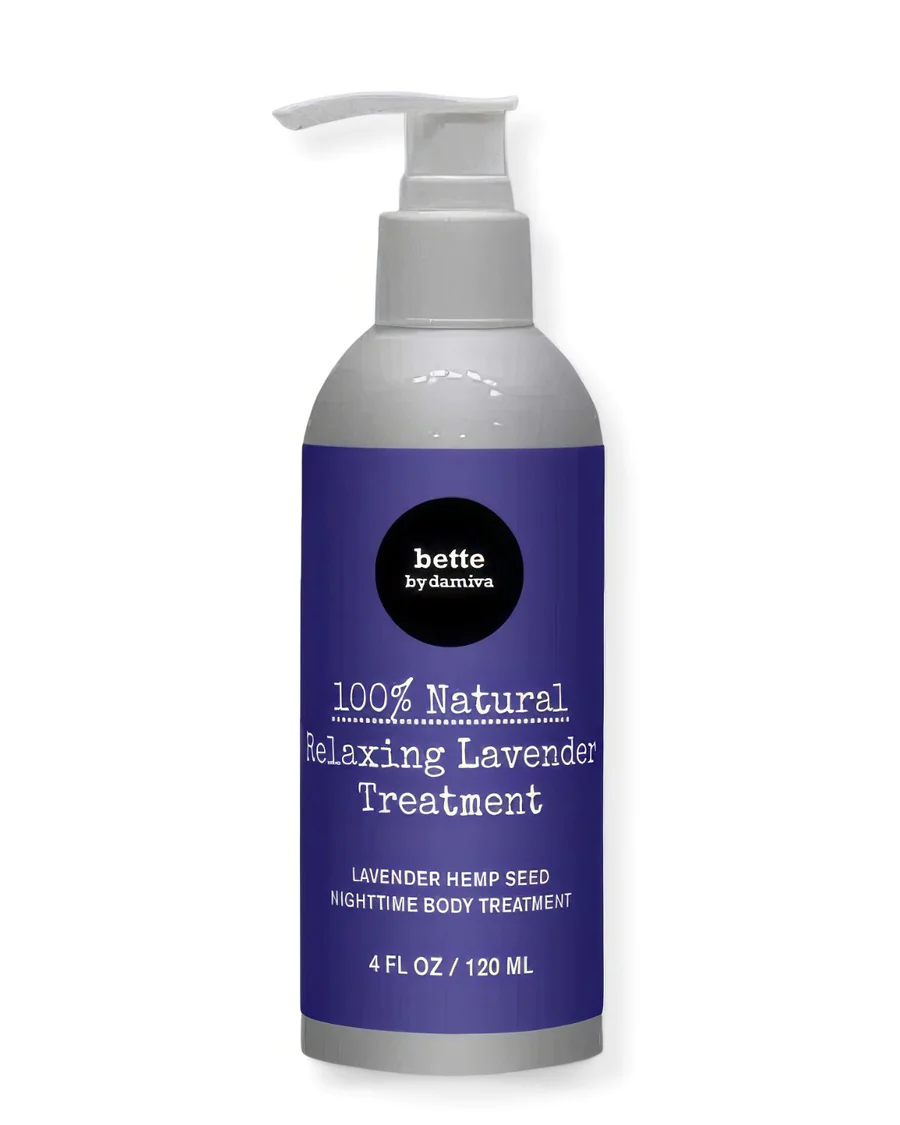
Bette 100% All-Natural Relaxing Lavender Body Lotion.
Chemical-Free
Your relaxing night time body moisturizer to leave the day’s stress behind. Decompress and wish your body good night with the calming scent of lavender.
The role of social activities and community involvement
Social activities and community involvement play a pivotal role in the mental and emotional health of women in their 50s. Building and maintaining strong social networks can provide emotional support, reduce feelings of loneliness, and increase a sense of belonging. Participating in group exercises, joining clubs, or volunteering can offer opportunities for social interaction while also contributing to a sense of purpose and community. These activities can also provide a platform for sharing experiences and coping strategies, particularly during life transitions such as menopause.
Coping with menopause and emotional changes
Menopause can bring about a range of emotional changes, including mood swings, anxiety, and feelings of sadness. Recognizing that these are normal experiences and seeking support when needed is essential. Lifestyle adjustments, such as prioritizing sleep, practicing relaxation techniques, and maintaining a balanced diet, can help manage these symptoms. It’s also beneficial to engage in open conversations with healthcare providers, friends, or support groups to navigate this phase with greater ease. Women should be encouraged to seek professional help if they experience persistent emotional distress, as treatments and therapies are available to provide relief.
In conclusion, staying active, managing stress, engaging in social activities, and addressing the emotional changes associated with menopause are all key components of maintaining mental and emotional well-being for women in their 50s. By embracing these strategies, women can enhance their quality of life and navigate this decade with vitality and resilience.
Lifestyle and Habit Formation
Creating a Sustainable Routine
For women in their 50s, establishing a sustainable routine is crucial for maintaining an active lifestyle. This involves setting aside specific times for physical activity that align with one’s daily schedule and energy levels. It’s important to start small and gradually increase the duration and intensity of activities to avoid burnout. Consistency is key, so choose activities that are enjoyable and varied to keep motivation high. Incorporating exercise into existing habits, like a walk after dinner or a yoga session during a favorite TV show’s commercial breaks, can also help solidify the routine.
Incorporating Activity into Daily Life
Staying active doesn’t always mean structured exercise sessions. Incorporating activity into daily life can be just as effective. Simple changes, such as taking the stairs instead of the elevator, parking further away from store entrances, or engaging in active hobbies like gardening, can significantly contribute to overall activity levels. Additionally, standing desks or active sitting options like stability balls can reduce sedentary time while working.
The Impact of Sleep and Rest on Activity Levels
Adequate sleep and rest are essential for an active lifestyle, especially as the body recovers and repairs itself during sleep. Poor sleep can lead to decreased motivation, increased fatigue, and a higher risk of injury during physical activities. Women in their 50s should aim for 7-9 hours of quality sleep per night and consider incorporating relaxation techniques such as meditation or deep breathing exercises to improve sleep quality.
Overcoming Barriers to Staying Active
Common barriers to staying active include lack of time, motivation, or physical limitations. To overcome these, it’s important to identify personal barriers and develop strategies to address them. For instance, scheduling workouts as non-negotiable appointments, finding an accountability partner, or choosing low-impact exercises that are kinder to the joints can help. Remember, it’s about progress, not perfection. Celebrate small victories and don’t be too hard on yourself when faced with setbacks.
In conclusion, women in their 50s can stay active by creating a sustainable routine, integrating physical activity into their daily lives, ensuring adequate rest, and overcoming personal barriers. By doing so, they can enjoy the numerous benefits that come with an active lifestyle, including improved physical health, mental clarity, and emotional well-being.

From unhappy, dry, and sandpaper to silky, smooth and feeling good. That’s Cleo. Cleo is a 100% natural labial balm to moisture and soothe “your other lips”. Cleo is chemical-free, water-free, pH optimized and helps maintain and restore your delicate labial skin’s natural flora. Ideal for daily use or as needed. Get the most silky, lovable lips ever.
Conclusion
Throughout this article, we’ve explored the multifaceted approach necessary for women in their 50s to maintain an active lifestyle. Recognizing and adapting to age-related physical changes is crucial, as is staying on top of preventive health screenings and managing any chronic conditions. Regular exercise, tailored to one’s capabilities, plays a pivotal role in preserving muscle mass and bone density, which are vital for overall mobility and health.
Nutrition cannot be overlooked, with a balanced diet rich in essential nutrients supporting physical activity and overall well-being. Mental and emotional health, too, is integral to an active lifestyle, with stress management, social activities, and coping strategies for menopause-related changes being key components. Finally, establishing sustainable routines and habits, ensuring adequate sleep, and overcoming barriers to staying active are all steps that contribute to a holistic approach to health and activity in this chapter of life.
Encouragement to take the first step and seek support
Embarking on the journey to an active lifestyle can begin with a single step. Whether it’s a short walk, a gentle yoga class, or a visit to a healthcare provider for a check-up, the first step is often the most important. It’s also essential to seek support, be it from family, friends, or professionals such as fitness trainers or nutritionists. Remember, you’re not alone, and there are communities and resources available to help you on your path to staying active and healthy.
Final thoughts on the lifelong journey of health and activity
Staying active in your 50s is not just about adding years to your life, but life to your years. It’s a commitment to yourself that can lead to a richer, more vibrant, and more fulfilling experience as you age. The strategies discussed are not just temporary fixes but are part of a continuous journey of health and activity that can bring joy, resilience, and strength into later life. So, take that first step, reach out for support, and embrace the lifelong benefits that come with staying active. Your future self will thank you.
Check out www.damiva.com for all-natural skin care products that you can enjoy after physical exercise!
